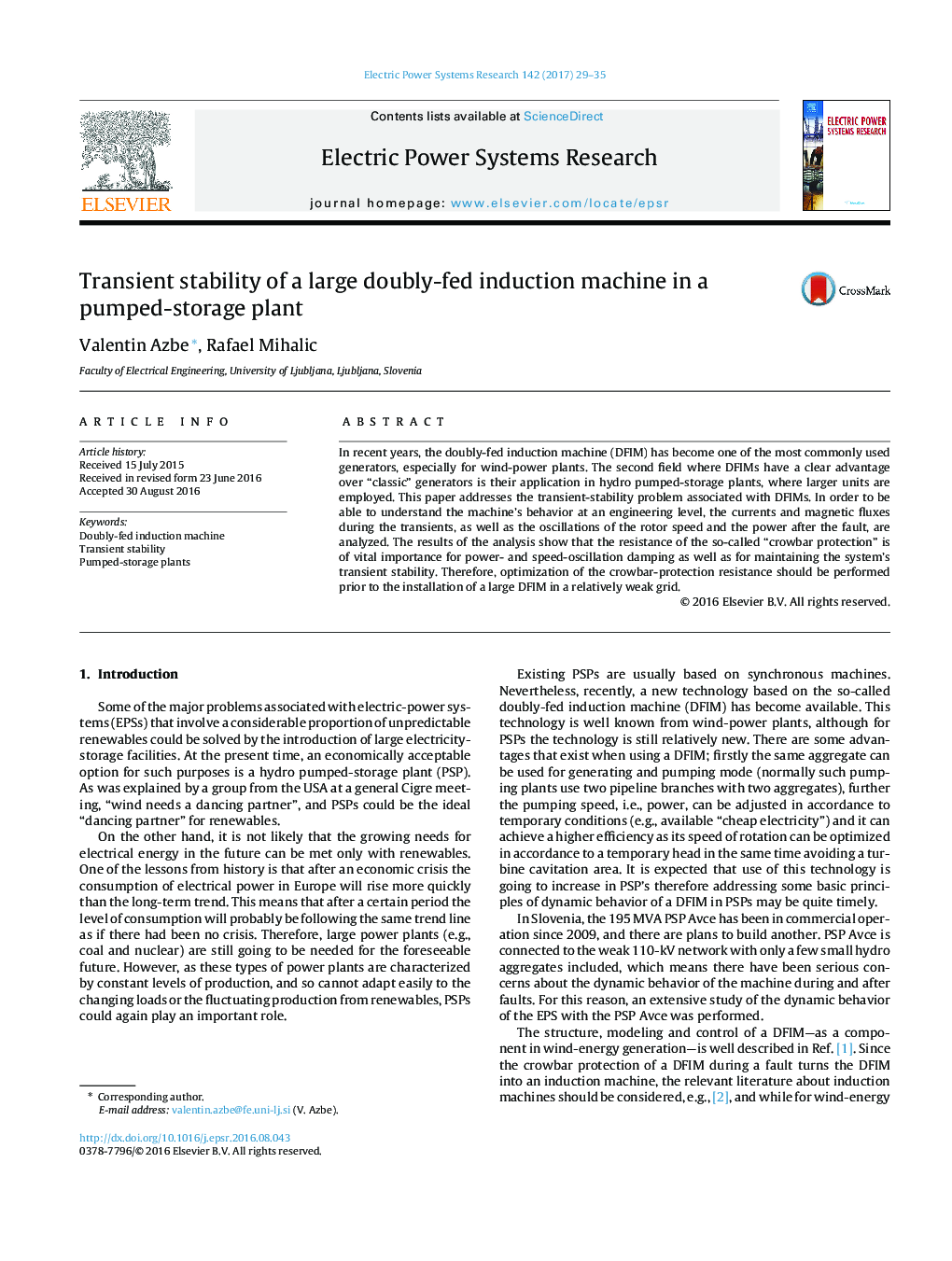| Article ID | Journal | Published Year | Pages | File Type |
|---|---|---|---|---|
| 5001457 | Electric Power Systems Research | 2017 | 7 Pages |
Abstract
In recent years, the doubly-fed induction machine (DFIM) has become one of the most commonly used generators, especially for wind-power plants. The second field where DFIMs have a clear advantage over “classic” generators is their application in hydro pumped-storage plants, where larger units are employed. This paper addresses the transient-stability problem associated with DFIMs. In order to be able to understand the machine's behavior at an engineering level, the currents and magnetic fluxes during the transients, as well as the oscillations of the rotor speed and the power after the fault, are analyzed. The results of the analysis show that the resistance of the so-called “crowbar protection” is of vital importance for power- and speed-oscillation damping as well as for maintaining the system's transient stability. Therefore, optimization of the crowbar-protection resistance should be performed prior to the installation of a large DFIM in a relatively weak grid.
Related Topics
Physical Sciences and Engineering
Energy
Energy Engineering and Power Technology
Authors
Valentin Azbe, Rafael Mihalic,
